How to Find a Lost Dog: The Best Tips if You Lose Your Dog
It’s every pet parent’s worst nightmare – you’ve lost your dog and can’t find them anywhere. What do you do? The next few minutes, hours, and days are essential to finding your dog and bringing them safely home. Here’s what to do if you lose your dog.
Start immediately
The moment you realize your dog is lost, you should begin looking for them. You have no time to lose, and starting early is crucial. The sooner you begin your search, the better your odds of finding your dog.
Search the neighborhood

If you’ve established that your dog is lost outside (and not in the house), start to check everywhere. Scour the neighborhood, and be sure to hit places that your pet has been before, like parks, stores, or common walk routes. Call out your pet’s name, rattle a treat bag, or carry your dog’s favorite toy with you.
Be sure to search your neighborhood at all times of day, not just during daylight hours. The best time to call for your pet is at night, and at dawn, as spooked dogs may only emerge when it gets dark or when fewer people are around.
Also, search by foot and by car, if possible. You will be able to cover more ground in a vehicle. If you’re calling from your car, be sure to drive slowly, roll down your windows, and stop the vehicle frequently to listen.
Make a flyer
Make a clear, informative flyer to get the word out. The flyer should include the following:
- PHOTO: A recent and clear photo of your missing dog.
- MISSING: The word MISSING or LOST in big letters at the top of the flyer.
- NAME: Your dog’s name.
- DESCRIPTION: A detailed description of your dog, including any markings, color, size, and any items that might be on your dog, such as a collar or sweater. Mention if your pet is on any medication.
- LOCATION: The last place your dog was seen. Include the address, neighborhood, state, and time of day.
- DETAILS: Any details about the event, such as “last seen running west through the park.”
- CONTACT INFORMATION: A easy way to contact you, usually a phone number and/or email.
- OPTIONAL: A reward.
Your flyer should be clear, uncluttered, and detailed, but not too wordy. A pop of color will help make your flyer more noticeable. Make sure the font is a good size, so people don’t have to strain to read pertinent information.
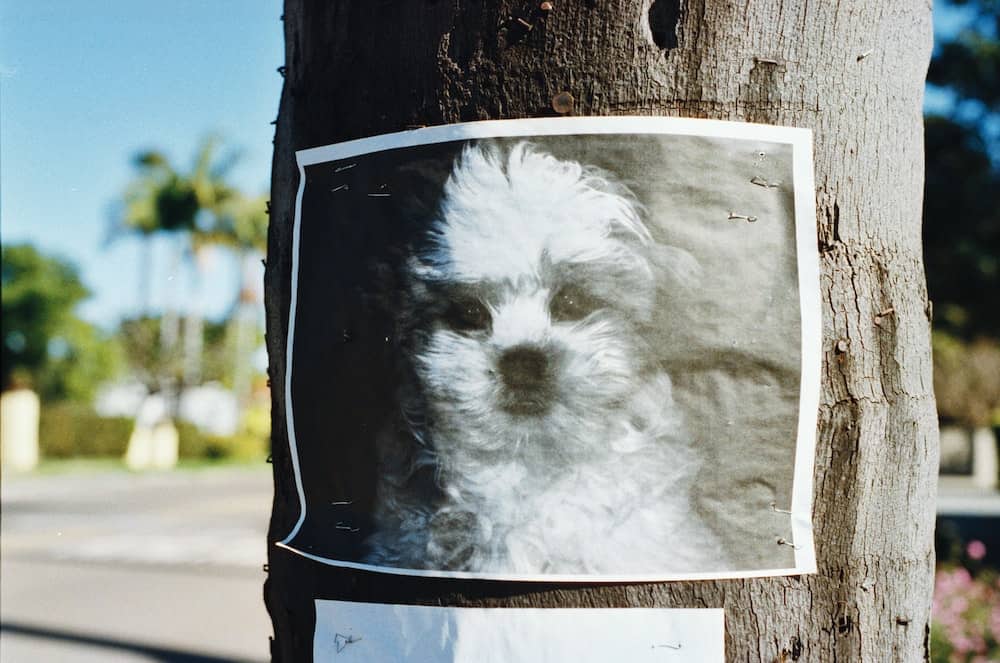
I have a lot of people messaging me with lost dog ads to share on @dogsofnyc. It’s always frustrating when the flyers are lacking.
For example, they display unclear photos, or are missing key information like the neighborhood the dog was lost in, etc. In those cases, it’s incredibly hard for people to help much or get the word out. A good, clear flyer will ensure more people get involved, and more get invested. The more help, the better!
Tip: Some have advised leaving out one identifying feature of your dog, so when people call or write in saying they have your pet or know where they are, you can ask about this detail to verify they’re honest.
Get the word out

Getting the word out is a great way to involve your neighbors. Once the community becomes involved, it will be easier to muster help and organize search parties. The more hands on deck, the better.
Here are ways to get the word out:
In Person: Canvas the neighborhood with the flyers, taping them to poles, windows, and doorways. Be sure to hit up any places with a lot of foot traffic and/or dog people. Your flyers should be clear (see above) and large enough to be read from 10 feet away.
Put up your flyers at the following locations:
- Around the neighborhood in a 3-mile radius.
- Building lobbies.
- Veterinarian offices.
- Local dog parks.
- Local businesses, including grocery stores, liquor stores, bodegas, restaurants, etc.
- Community bulletin boards.
Social Media: Social media is a great way to get the word out. If you’re posting on a Facebook or Instagram account, make sure the account is public so people can easily share the post with others. Consider creating a hashtag so people can easily follow updates, and asking accounts with many followers to share.
Consider posting in the following online locations as well:
- NextDoor
- Your neighborhood’s Facebook or Instagram page
- A Lost & Found pets Facebook page
- Local dog groups, including dog parks, on Facebook or Instagram
- Local animal rescues or shelters
Online: There are websites online dedicated to helping people find their lost pets. Consider posting on their sites, if it’s free. Caution: some websites may charge a fee and take advantage of emotional pet owners – they’re usually scams!
- Petco Love Lost
- Center for Lost Pets
- Fido Finder
- Lost Dogs of America
- Pet FBI
The Media: It might be difficult to manage, but if you have any connections to the media (local radio stations, newspapers, or TV stations) now’s the time to call in a favor. The more people know your dog is missing, the better, so get the word out!
Give regular updates

Regular updates, whether you’re posting on Facebook, Instagram, or communicating via email, will help keep the community engaged and in the know.
Consider creating a hashtag, like #helpfindDOGSNAME or #bringDOGSNAMEhome, so people can easily search through postings and stay updated.
Even if you spend the day searching and there were no leads, let others know what areas you scoured and that you are still on the hunt.
Keep your phone handy

Remember that contact number you put in the flyer? Well someone can call any time with an update! Be sure to keep your phone handy, so you’re reachable at all times.
This goes for if you used a contact email instead (although I recommend a phone number!) And whatever you do, don’t make your contact number a landline!
Contact local animal shelters and your microchip company
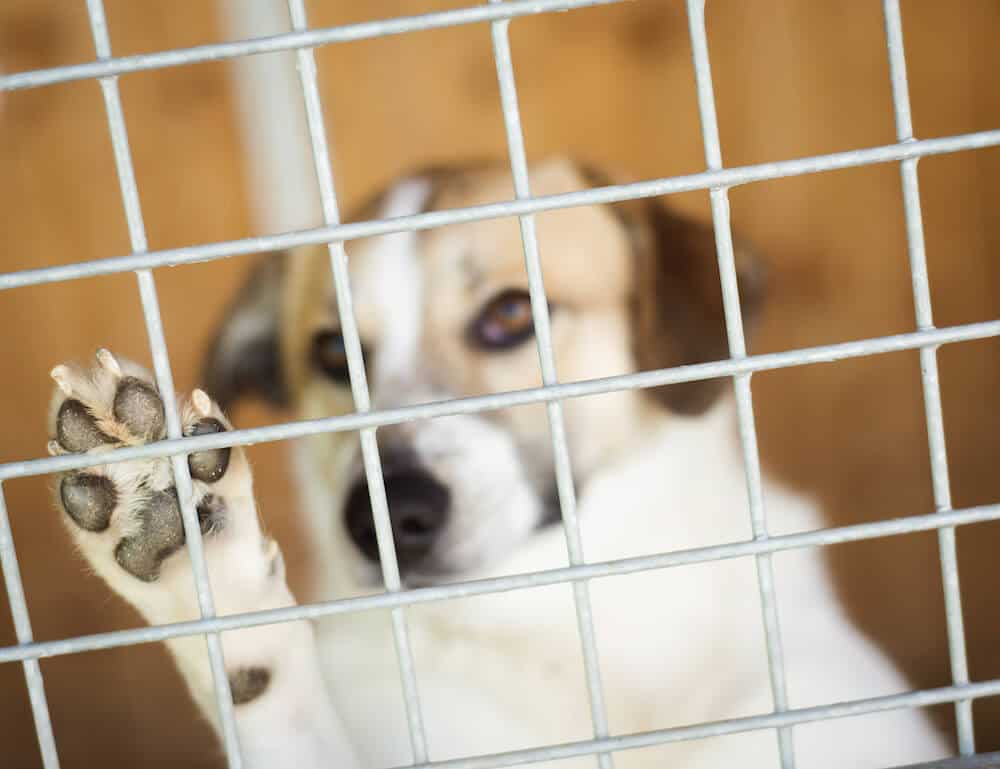
If someone finds a lost dog, they’ll most likely either take it to get the microchip scanned, or drop it off at a local shelter. Beat them to it, and contact both your microchip company and the local animal shelters in your area and file a lost pet report. They will flag your pet as lost and be on alert in case they are brought in or contacted.
Shelters are usually understaffed, so don’t just call — also visit the shelters to search for your pet. You can also check local shelters online to see images of newly registered animals.
If there is no shelter in your area, contact the local police department or animal control.
Scour Facebook and Craiglist

There are a few reasons to turn to Facebook and Craiglist if you’ve lost your pet:
- Someone who has found your dog might post about it on either platform. Check Craigslist postings, and in different Facebook lost and found groups.
- Selling dogs, especially pure bred dogs, is a big business. Someone who has found your dog and is trying to make a quick buck might advertise selling them on either Facebook or Craiglist.
- They’re great places for you to post about your missing dog and get the word out.
Be prepared for scam calls

It’s hard to believe, and a sad reality, but bad people often try to take advantage of distraught pet owners, especially if there’s a reward involved. It’s easy to do, since those who have lost their pet are usually desperate and emotionally vulnerable.
If a stranger calls you and claims to have your dog, ensure it’s not a scam by asking them to send you a photo of your dog, or inquiring about the identifying characteristic you left out of your flyer.
Red flags from callers include people refusing to send photos, or those who ask for money in advance.
Don’t give up
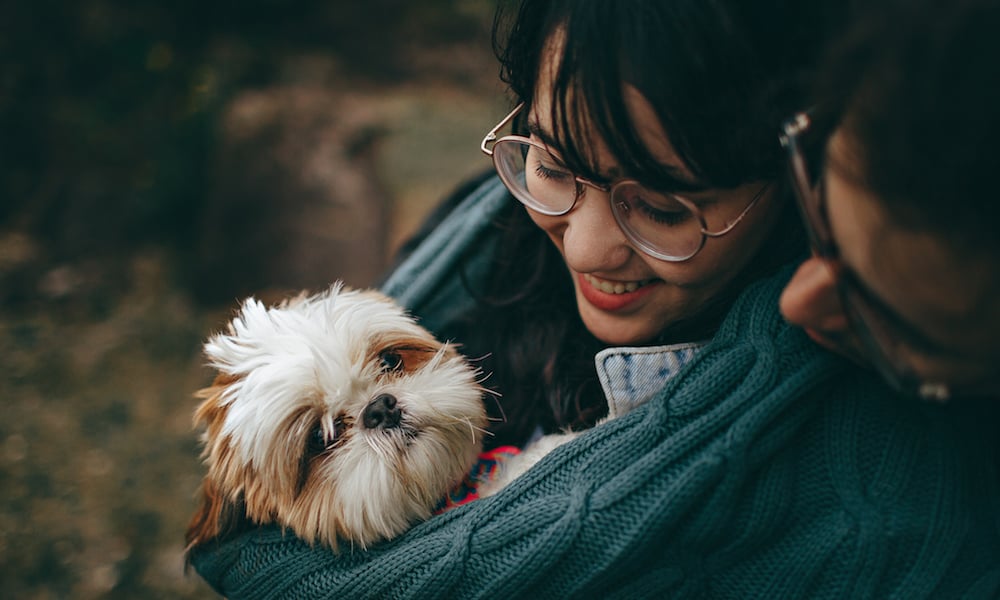
If you’re lucky, your dog will be found right away, but it could take days, weeks, months, or even years! Don’t lose hope. Keep looking, keep providing updates so the community stays engaged and involved, and expand your search.
It’s a heartbreaking experience, but lost pets have been reunited with their families successfully, even after long periods of time. Remain diligent and persistent, and continue your search – don’t lose hope!
Have you ever lost a pet?

Pin for later!



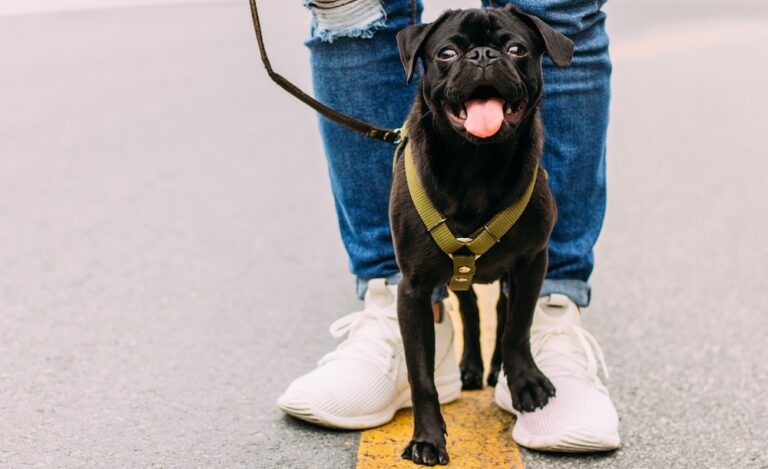
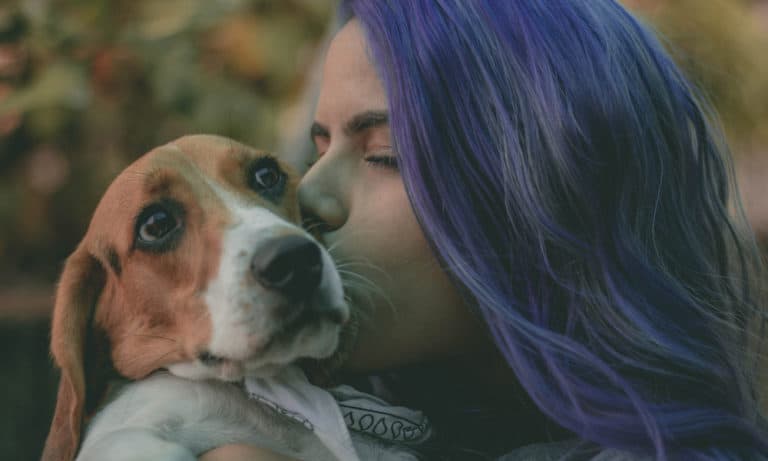




It is important to stay optimistic and keep searching for your dog, as many lost dogs are reunited with their families.